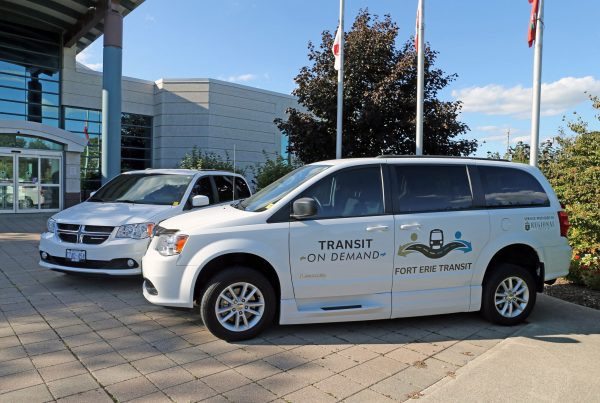These days it can be said without a trace of irony that single occupancy vehicles (SOVs) are one of the seminal catastrophes of the 20th century. Although the number of people driving alone is trending down in North America, more than 50% of vehicles on the road still are only transporting one person. The environmental, economic and social impacts of our addiction to driving alone are well documented. But we cannot suddenly abandon our cars. The geography of settlement, at least in the developed world, means that driving will be necessary for a huge number of people. And even urbanites ensconced in their walkable, transit rich neighbourhoods can appreciate a car trip. The question is how can we get car trips to be convenient, affordable and shared, before we melt the planet?
Opportunities are abound to reduce SOVs using technology and so are chances to make money doing so. Probably the biggest and most influential ridesharing solution is the one provided by Uber and other Transportation Network Companies (TNCs). But these are really just a technologically enabled matching service/marketing platform, mixed with a taxi model of operations. TNCs match riders with nearby drivers, and then tell the drivers where to go, and help the rider pay the driver, while taking a cut. This has been spectacularly scaled to be in almost every city on Earth that has not taken effective legal action to prevent it. The sustainability of all these TNCs is questionable considering Uber lost over a billion dollars in the first six months of 2016. But we do not care about the problems of Uber and the future of their gigantic pile of venture capital money. This is for all the burgeoning rideshare services, hungry entrepreneurs, or established transportation companies that want to pivot into ridesharing.
There are rich revenue sources available to be tapped in both the public and private transportation markets. Public policy is shifting toward an aggressive car reduction mission. There is already a five year plan to add 10,000 ridesharing vehicles to Los Angeles with the hope of reducing overall car usage by 100,000, while adding cars in order to remove cars seems crazy, as we shall see there is a method to the madness. There is also the potential for ridesharing to integrate with public transit, this is happening already as TNCs partner with the lower tier American public transit services to provide first/last mile solutions. Beyond the public market, there is still room in the private. Even after blistering 57% and 51% growth in 2014-2015 the ridesharing market in the US is still growing steadily, with projections of over 20 million users in 2020. The overall taxi and car-service market will grow to be $183 billion by 2024.
Beyond the possible size and makeup of the market, we should consider what ridesharing actually is and what it can be for operators in the people transportation business. The first and most important component of ridesharing, as in any reliable people transportation business, is the source of trips. In public transit trips are people standing at the side of the road or on station platforms waiting for scheduled vehicle. For taxis, trips are people waving cabs down or calling dispatchers giving a time and place for pickup. For non-emergency medical transportation most trips are distributed through a variety of brokerage mechanisms, usually a data file full of trip and rider information, pushed out daily from a central booking agency. Ridesharing is a little different. There is the TNC method which uses a mass marketed smartphone app to gather trips. Riders log in, give their location, where they want to go, and the app sends that information to a nearby driver. But for veritable flood of new ridesharing companies there is an opportunity to change how to get those trips. Apps are great, but they require the type of viral marketing that is tough to pull off when you are a late entrant to the market. This is where the business development aspects of people transportation are key. Either identify a niche group of riders that can be easily captured by your particular application and service, or find an institutional source of trips, like a brokerage, that can feed them to you in a reliable manner. Or somehow out compete the established ridesharing juggernauts. Which might be possible if regulations change, like in the case of Austin, Texas.
The next question is how a rideshare service will procure vehicles and drivers. One of the challenges of taxi companies, and public transit, and the reasons they have so many subsidies and regulations, is that they are very capital intensive. Taxi companies need to purchase vehicles and in the large markets, they also need to purchase expensive medallions. Public transit procurement and hiring is a morass of political inefficiency. Ridesharing has another option, inherent in the name itself, which implies the drivers are sharing their cars. It is no secret that drivers are both sharing their vehicles with the riders and also with the ridesharing company. This model is what allows ridesharing companies to scale so quickly, as they do not require immense amounts of capital to get a large fleet, or to hire drivers. While contract drivers bringing their own vehicles to the table are a boon to ridesharing companies, they are also a liability, as they are another customer that must be obtained, managed and provided for. This also means different requirements for technology. A contracted fleet needs to give greater flexibility to drivers and be prepared for variances in vehicles and service levels, it might also need provide an auction service for drivers to bid on trips, or simply force drivers to take a certain percentage of trips.
Once you have a source of trips, and a supply of vehicles and drivers, these aspects of operations must be coordinated. This can be done through institutions, bureaucracy or technology. Taxi cab companies are institutions, they have customer service representatives in a call center and dispatchers and radio communications with drivers who have training to know where to search for trips. They have no easy way to scale or share rides. They are doomed. Public transit is a bureaucracy with planners and workers setting up a system that runs the vehicles to serve predicted and modeled trips, they will keep doing what they do as long as they are subsidised. Ridesharing software ideally should be a system to manage and coordinate demand for trips and fleets of vehicles. The right technology allows the best possible coordination to reduce single occupancy vehicles while still providing a better service than public transit, at a more affordable rate than taxis. Sophisticated technology that can take in the data of trip times and locations and vehicle capacities, locations and schedules; could then optimize the fleet’s routes and schedules to ensure the rides are shared to maximum capacity. That is how a hypothetical fleet of 10,000 cars that are properly shared can reduce the number of cars on the road by 100,000.
Optimizing a ridesharing fleet for maximum vehicle efficiency has not really been done before. The TNCs are more interested in being souped-up taxi services, and although many offer a shared ride to reduce costs, this is optional. The burgeoning microtransit industry, most notably, Bridj and Chariot are also examples of attempts to optimize ridesharing but are closer to fixed route public transit. The biggest change required is probably not in the operations of services, but rather in consumer expectations. People expect to get in a car and get from point a-to-b as fast as possible, this is not ideal for shared fleet and is also expensive. A truly efficient ridesharing service would work based on time windows; riders set up a window of when they want to be picked up and when they want to reach their destination. Then ridesharing software would, in real-time, optimize the entire fleet to get them, and all other riders to their destination within the windows. It would do so by using an algorithm to plan all the trips with the fewest vehicles possible.
Most ridesharing services think that riders do not want to be beholden to a system. Especially one that treats efficiency as a higher priority than immediacy. However, considering that public transit operates in this way already, favouring efficiency is not as much of a stretch as people believe. Especially when you can pass significant savings onto riders. This is Pantonium’s vision for ridesharing; using technology to combine the experience of being driven in a car with the efficiency of public transit, which could be applied to any type of people transportation fleet that wants to share rides to reduce costs while still being competitive. If you have any thoughts on ridesharing software or our particular vision, leave them in the comments. We are all riders on this planet, it is time we started sharing them properly.




